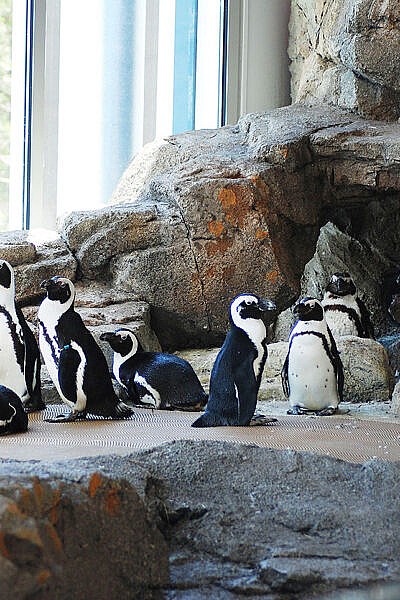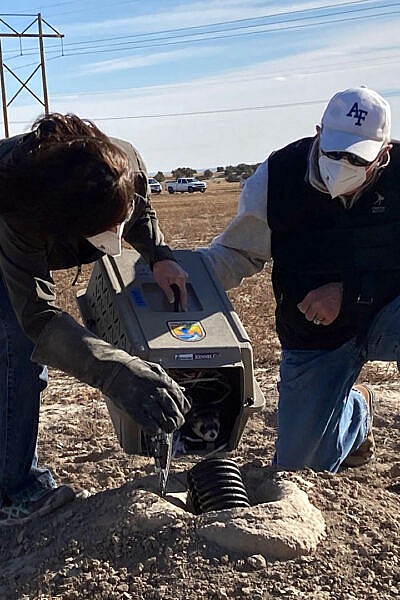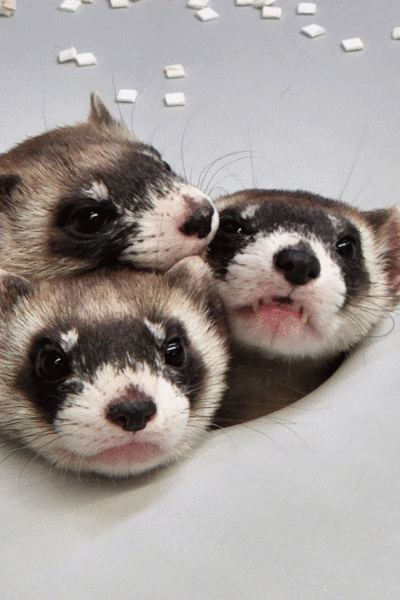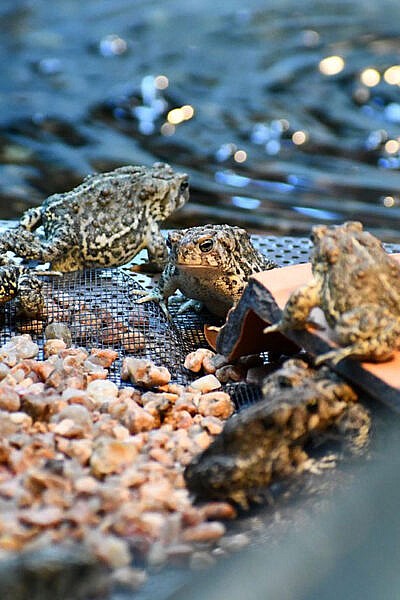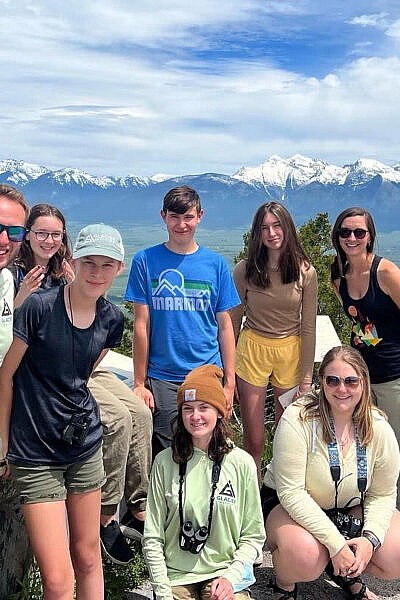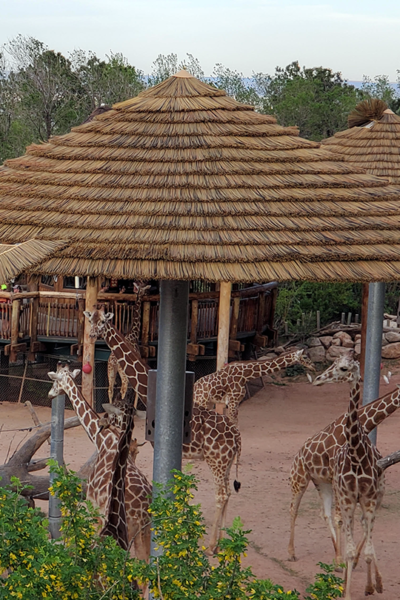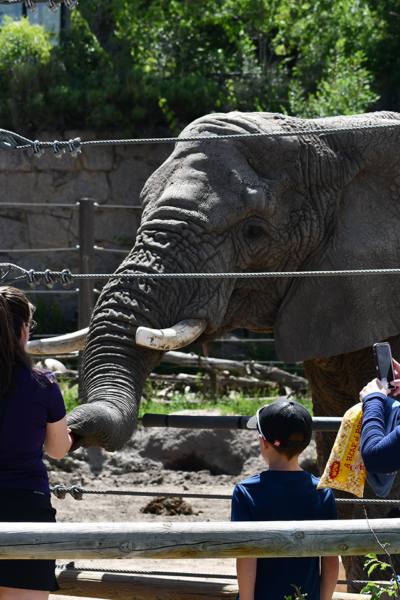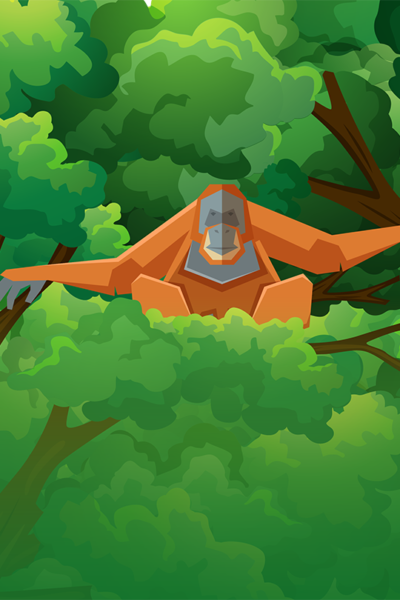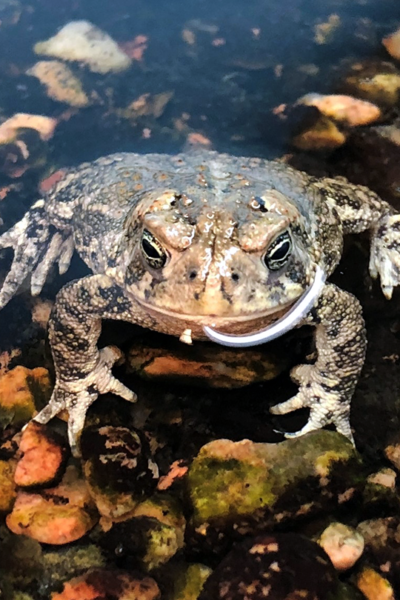The results are in! Last month, we asked for your help to finalize our logo for an exciting new endeavor. Thanks to your votes, we’re happy to share the final result and to tell you more about our program.
Cheyenne Mountain Zoo has established a first-of-its-kind giraffe training, knowledge-sharing and giraffe emergency response program, called the International Center for the Care and Conservation of Giraffe.
“We have a long history of caring for a large herd of prolific, interactive giraffe that participate in daily guest feedings, weekly hoof care and a wide variety of trained voluntary husbandry and medical procedures,” said Amy Schilz, senior animal behaviorist. “With this new program, we can help giraffe all over the world get that same level of care.”
CMZoo’s giraffe herd has seen over 200 giraffe calf births, and the team who cares for them is passionate about learning more, teaching more, and building a network to advance the care of these beautiful creatures. The International Center for the Care and Conservation of Giraffe is a concentrated effort by CMZoo to consolidate resources and expand educational programs to improve and enrich the lives of giraffe in human care throughout the world, while inspiring conservation for their wild counterparts.
The International Center for the Care and Conservation of Giraffe has three main goals:
- Improve the quality of veterinary care available for giraffe in human care and leverage that information for field conservation.
- Continue to advance behavioral husbandry practices to improve giraffe welfare.
- Establish Emergency Response Teams worldwide to respond to giraffe health emergencies and field conservation needs.
“We’ve been leading giraffe care workshops since 2015,” said Schilz. “Now that CMZoo has made this investment in a fully dedicated staff and resources, we’re going to be able to reach so many more people and ultimately improve the lives of more giraffe.”
CMZoo’s giraffe herd has participated in voluntary husbandry training for a decade. In this modern method of cooperative care for animals, trainers reward animals for doing something asked of them – usually something that benefits their ongoing health care. Giraffe at CMZoo voluntarily participate in training for injections, blood draws, x-rays, eye exams, hoof care and more.
“Giraffe are incredibly smart,” said Schilz. “Our whole herd voluntarily participates in their own hoof care. We ask them to come to the training panel where they raise their leg to rest their hoof on a block. Then we can trim, file or x-ray their hoof while we give them lots of rye crackers. It’s incredibly fulfilling as a trainer, and I’m excited to be able to share these methods with even more giraffe lovers through this new Center.”
During voluntary training, the giraffe can choose to approach the trainers, and they have every opportunity to walk away. This method of training means giraffe can receive the care they need without anesthesia, which always carries some level of risk, especially for large animals, like giraffe. They’re receiving rewards for participating, so they’re typically eager to participate in the activity, rather than being told or forced to do something they don’t understand. Training sessions are less stressful for the trainers, too, because the animal is calm and confident.
Bailey, a 10-year-old female giraffe at CMZoo, is one of the giraffe that are trained to participate in voluntary blood draws. This behavior usually helps Bailey’s care team track her overall health. But, because Bailey is so good at this behavior, her team tested the dosing and longevity of a medication that can be used to help wild giraffe combat skin disease.
“Determining appropriate and effective doses of medications helps better manage giraffe health everywhere, and helps prevent drug resistance,” said Dr. Liza Dadone, senior giraffe veterinarian. “Especially when you’re working with wild giraffe, your access for repeating doses is very limited, so you want to be sure you’re using medications that will get the job done.”
To help identify the dose and duration of this treatment, Bailey received a single topical dose at CMZoo. She then had serial blood samples collected over the next few days and periodically over the next couple of weeks to measure the levels of medication in her system. CMZoo shared those findings with the greater zoo community and conservation partners to help better manage these skin infections in giraffe in human care and in the wild.
Bailey’s contribution is just one example of how giraffe in human care can help wild giraffe. Conservation collaborations, like giraffe reintroductions in Uganda, led by the Uganda Wildlife Authority and Giraffe Conservation Foundation with support from CMZoo and the zoo community, are restoring giraffe to historic habitats and ensuring the protection of wild places.
According to recent reports, wild giraffe populations have grown 20 percent since 2015, with around 117,000 individual giraffe documented. But, there’s still work to be done. The International Union for the Conservation of Nature (IUCN) categorizes giraffe as vulnerable to extinction, while two northern subspecies are considered critically endangered, and Masai and reticulated giraffe (the subspecies found at CMZoo) are endangered.
If more giraffe like Bailey can inspire the general public to care about giraffe conservation while simultaneously contributing to scientific findings, wild giraffe populations will have a better chance at surviving.
The International Center for the Care and Conservation of Giraffe offers virtual and in-person consulting on anything from husbandry training to veterinary diagnostics, habitat layout and design, and more. The Center is also establishing a network of Emergency Response Teams throughout the country, so when a giraffe’s life depends on fast action, expert help and resources are closer and those individuals have a better chance at recovery.
For more information, visit cmzoo.org/GiraffeCare for more information.
